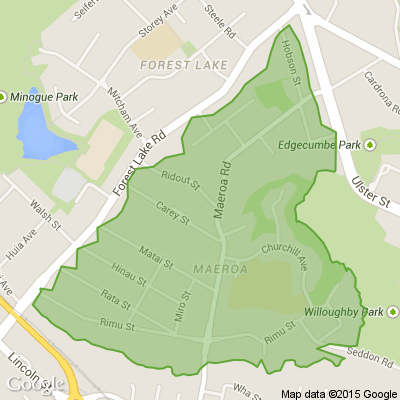Kolorex & Horopito - its hero ingredient
New Zealand’s indigenous flora was used historically by Māori and through Rongoā Māori – traditional Māori medicine and healing – we learn the traditional use of our plants which today are corroborated with decades of research. It continues to fascinate me how we are provided with the medicinal plants we require for optimal health in the environments we reside. Today I want to highlight one particular plant called Pseudowintera colorata, or Horopito as it is more commonly known.
Horopito is an evergreen shrub/small tree with elliptic leaves often splattered with red – not only do they look spicy but they taste peppery too leaving a wee bit of a burning sensation in the mouth. Nothing to cry about though! As you will learn further down, it is this peppery element lending to its therapeutic benefits.
It is the spicy leaves of Horopito that we use medicinally. Traditionally, Māori used Horopito leaves to treat fungal skin infections such as ringworm, and other skin conditions. Māori also used the leaves to help those with diarrhoea and stomach pain. Other traditional uses of Horopito include chewing on the leaves for toothache and steeped leaves taken internally to act as an analgesic (pain killer). Today we know the main action of Horopito is anti-fungal with many years of research-backed evidence to verify this. Other beneficial actions may include anti-bacterial, anti-viral, anti-inflammatory and antiseptic.
The leaves contain tannins, flavonoids and volatile/essential oils. One of these volatile oils, specifically a sesquiterpene dialdehyde, exhibits the well documented fungicidal action listed above. This constituent is called polygodial and is the main biologically active constituent of Horopito.
Polygodial is produced by the plant itself to help combat attack by fungi. It is this very compound that shows extensive anti-fungal activity in humans too, especially against the yeast Candida albicans. See here for further information and studies on this: www.kolorex.com...
Interestingly, the inhibition of fungal growth by Horopito was shown to be stronger and faster acting when compared against a common anti-fungal pharmaceutical preparation amphotericin B, but without the side effects.
An imbalance of the gut and vaginal microbiome can seem rather common nowadays, especially with our stressful lifestyles and suboptimal diets high in refined carbohydrates and sugar. C. albicans is normally found in a healthy gut; it only causes problems when individuals are immunocompromised for whatever reason, causing an ‘overgrowth’ which is known as candidiasis.
A common naturopathic approach to assist those with candidiasis may include the following steps:
– Identify and address underlying and predisposing factors
– Follow an anti-candida diet (little-no refined carbohydrates and sugar among other dietary measures)
– Provide nutritional and herbal supplemental support
– Support and enhance immune system function
– Support and promote detoxification and elimination organs
In relation to women’s health, C. albicans can overpopulate the vaginal flora when other beneficial bacteria are low causing conditions such as thrush. Thrush is unfortunately a common condition experience regularly by some women. Horopito may be used successfully for cases of thrush, both orally and externally. A 2013 study by Chopra, V et al found Horopito to be “equally as effective as itraconazole (a pharmaceutical anti-fungal medication) for the overall treatment of recurrent vaginal thrush.” When used topically for thrush Horopito is in a preparation with other soothing ingredients to help avoid a burning sensation, so don’t worry! Another fungal condition Horopito may be used topically for is athlete’s foot.
With the well-researched benefits of Horopito, in particular for fungal conditions, it is an excellent herb to have in our tool box as a natural health practitioner. We are lucky to have continued access to this powerful ancient herb used by our ancestors.
Source:Ashly Olsen is a Naturopath and Natural Fertility Educator based in Mount Maunganui, New Zealand.

Why do you think they're selling well?
More houses are selling in Cambridge now than they were in 2021’s peak housing market.
The median house price has remained consistent at just above $1 million over the last year, but reaching a peak of nearly $1.5m in January 2022.
Why do you think they're selling well? Tell us your reasons in the comments (adding NFP if you don't want your words used in print).

Live Q&A: Garden maintenance with Crewcut
This Wednesday, we are having another Neighbourly Q&A session. This time with John Bracewell from Crewcut.
John Bracewell, former Black Caps coach turned Franchisee Development Manager and currently the face of Crewcut’s #Movember campaign, knows a thing or two about keeping the grass looking sharp—whether it’s on a cricket pitch or in your backyard!
As a seasoned Crewcut franchisee, John is excited to answer your lawn and gardening questions. After years of perfecting the greens on the field, he's ready to share tips on how to knock your garden out of the park. Let's just say he’s as passionate about lush lawns as he is about a good game of cricket!
John is happy to answer questions about lawn mowing, tree/hedge trimming, tidying your garden, ride on mowing, you name it! He'll be online on Wednesday, 27th of November to answer them all.
Share your question below now ⬇️

PM says the ‘war on farming’ is over, at Fieldays’ Mystery Creek
The rural sector will pull the country out of recession, Prime Minister Christopher Luxon told farmers at Mystery Creek on Tuesday.
Luxon’s main message was that farmers are not villains, they are “partners” of the Government and the saviours of the New Zealand economy.







 Loading…
Loading…








